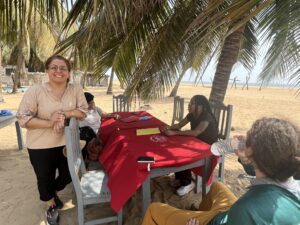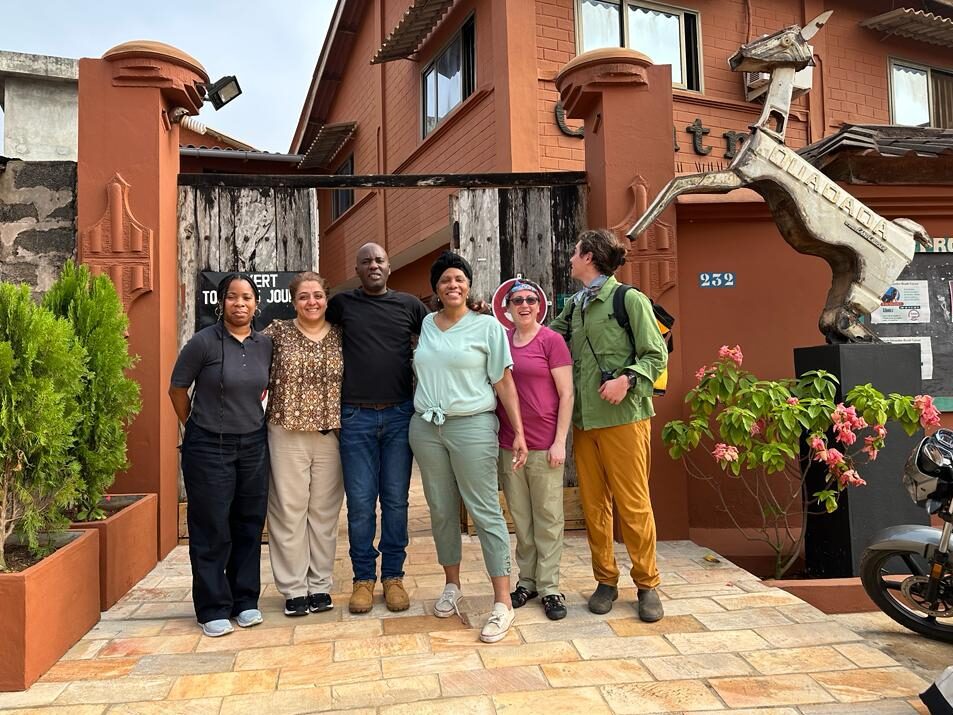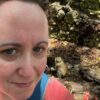Over the winter break, Dr. Jessica Parr and Halimat Haruna of the Department of History embarked on a research trip to Porto Novo, Benin under a Tier 1 grant with the United Nations Educational, Scientific and Cultural Organization (UNSECO).
This project works with the UNSECO’s world heritage initiative known as PRÉMA (Preventive conservation in museums of Africa) which has trained African professionals on conservation and exhibition practices in schools such as Porto Novo’s School of African Heritage (EPA). Dr. Parr serves as a Co-PI along with Killion Mokwete (Architecture) and Patricia Davis (Commuinications), and Bahare Sanaie-Movahed (DSG/Data Services). Halimat Haruna contributes as a research assistant along with undergraduate, Gavin Gershman (Architecture).
The interdisciplinary team of archivists, historians, architects, visual culture scholars, and geospatial specialists work in collaboration with these college/university heritage programs designed for African individuals to discuss their own cultures.
Both Dr. Parr and Halimat have joint interest and passion in capturing the vibrant historical structures of Benin which have significant value to both the local and global community. Dr. Parr is a historian of the Early Modern Atlantic who specializes in race and memory in the eighteenth century, the digital humanities, and archival practices. Halimat Haruna is a first year PhD student interested in decolonization of knowledge through spiritual practice with West African craft history, the digital humanities, and visual culture (performance and video).
The week-long trip began the first phase of their project with three main goals, the first to create 3D LiDAR scans for georeference of historical buildings at risk in Porto Novo for a geospatial archive. One of these includes the Great Mosque of Porto Novo which was completed in 1925 but is not under critical renovations to maintain its structural integrity. The second goal was to interview key cultural heritage figures including Professor Franck, the Director of EPA, and the Director of Cultural Heritage for Porto Novo, the Imam of the Grand Mosque, and the Director of the Palais Royal. Lastly, the group participated in cultural exchanges with their community contacts about public history and preservation.
Dr. Parr and Halimat described the trip as an insightful experience into the culture of Porto Novo enhanced by their local guide who possessed an immense knowledge of Benin’s history. Some of their notable observations was the adaptability and resilience of the people through everyday movement, the impressive traditional clothes and gorgeous geometric prints, and the local beer and food with rich complexity and connections to Yoruba culture and beyond.


Both Dr. Parr and Halimat also referenced the opportunities they had to see Porto Novo’s public history initiatives which are geared towards telling Benin’s heavily involvement in the transatlantic slave trade. This region played a key role as a part of a coastal slave trading port where captives were gathered before being exported. Although they were unable to see the Marina project, a waterfront memorial to the slave trade,their guide was able to take the group to less known commemorations to the lives lost. This included La Porte du Non-Retour (The Door of No Return), a series of statues and installations marking the final journey of enslaved Africans before deportation. The home of the de Sousa family in Ouidah was associated with Francisco Félix de Souza, an infamous Brazilian slave trader who settled in the Bight of Benin in the nineteenth century and eventually became Viceroy. This experience was described by Dr. Parr, as enriching to see Benin, “ doing public history in a multidimensional way
On this trip, their team was able to georeference five buildings, interact and build relationships with dignitaries and local individuals, and gain in-person knowledge of Benin’s historical significance and efforts to highlight it. In the future, Dr. Parr and Halimat expressed the importance of additional research trips, drone equipment, registering sites with UNESCO to obtain preservation funds, and ultimately building a sustainable model for other universities to follow.





